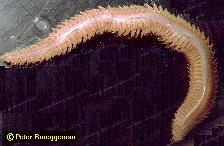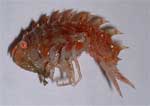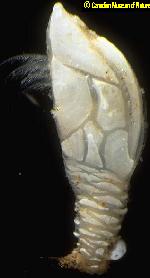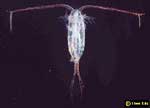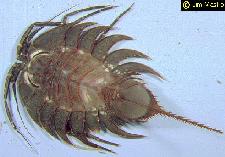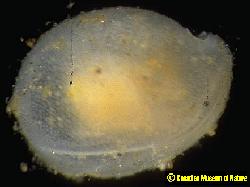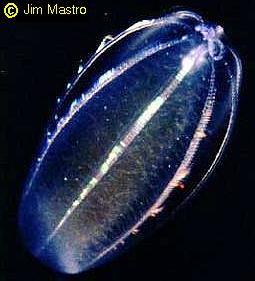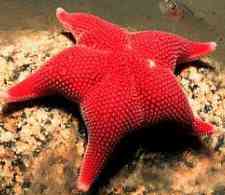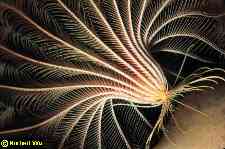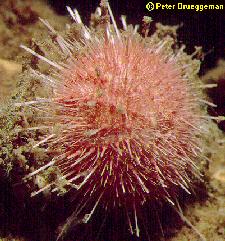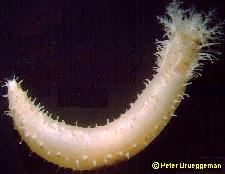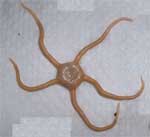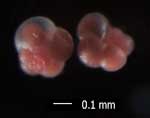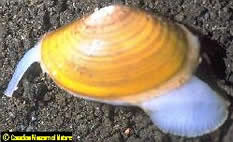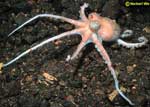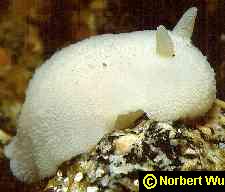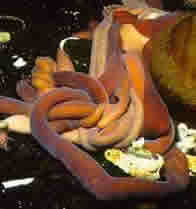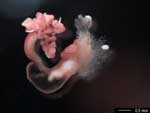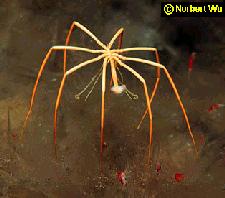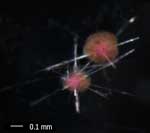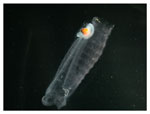Animals
|
| Below is a brief introduction to some of the animals that we will examine
|
Annelids: invertebrate phylum of about 16,500 species of segmented worms that include familiar species such as earthworms, leeches and a wide variety of other forms including sand and tube worms |
| |
Adults |
Larva |
Polychaetes: most marine worms belong to this group |
|
Nectochaete
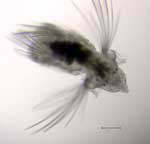
|
Crustaceans: animals such as krill, shrimp and lobsters that have a hard external shell that protects their body |
| |
Adults |
Larva |
Amphipods: laterally compressed crustaceans |
|
|
Barnacles: crustaceans that are often attached to hard surfaces |
|
Cypris
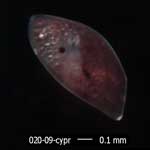
|
Copepods: a very common planktonic crustacean |
|
|
Euphausids: krill; planktonic shrimp-like crustaceans |
|
|
Isopods: a group of dorsal-ventrally flattened crustaceans |
|
|
Ostracods: planktonic crustaceans that look like clams |
|
|
| |
Adults |
Larva |
| Ctenophores: transparent, planktonic jelly-like animals |
|
|
Echinoderms: marine invertebrate phylum of about 7,000 species that includes sea stars, sand dollars, sea urchins and others that have 5-part symmetry; most adults in this phylum are benthic |
| |
Adults |
Larva |
Asteroids: sea stars; body is star-shaped with five or more arms coming off a central disk |
|
Brachiolaria
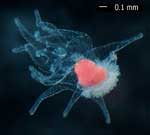
|
Crinoids: sea lilies and feather stars; body forms a cup with arms extending out from the cup |
|
|
Echinoids: sea urchins and sand dollars; body is globe-shaped with spines |
|
Echinopluteus
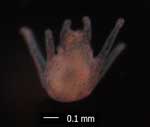
|
Holothuroids: sea cucumbers; body is sausage-shaped and long |
|
|
Ophiuroids: brittle stars; body has five arms distinctly separated from a central disk |
|
|
| |
Adults |
Larva |
Foraminiferans: planktonic protists with a calcareous shell |
|
|
Molluscs: invertebrate phylum of about 93,000 species almost all of which have an inner or outer shell and a soft body; includes clams, snails, sea slugs, octopus, squid and other shelled invertebrates |
| |
Adults |
Larva |
Bivalves: molluscs with two shells hinged together |
|
|
Cephalopods: octopi and squid; molluscs with a well- developed head |
|
|
Gastropods: molluscs with a single, often spiraled shell |
|
Veliger
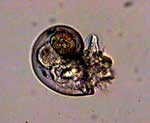
|
Nudibranchs: a group of shell-less gastropods |
|
|
| |
Adults |
Larva |
| Nemerteans: ribbon worms; unsegmented worms that can extend their bodies |
|
Pilidium
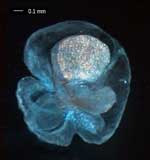
|
| |
Adults |
Larva |
| Pterobranchs: a small colonial group of hemichordates, related to echinoderms |
|
|
| |
Adults |
Larva |
| Pycnogonids: sea spiders; marine members of the phylum Arthropoda, more closely related to spiders than crabs or insects |
|
|
| |
Adults |
Larva |
| Radiolaria: planktonic protists with spines made of silica |
|
|
| |
Adults |
Larva |
| Salps: marine planktonic members of the group Tunicata; closely related to sea squirts |
|
|
|
|



